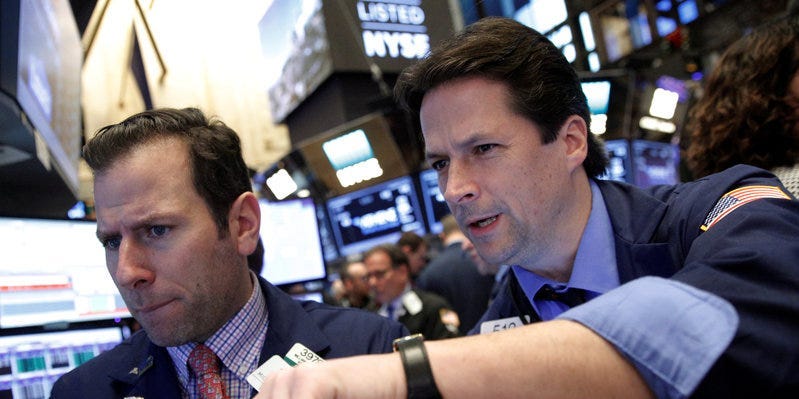Fears of a coming earnings recession might be overblown, says BMO Capital Markets. Historical data shows four of the last seven earnings recessions didn’t coincide with economic contractions. BMO also found that the S&P 500 during 16 profit recessions since 1948 rose by an average of 5.9% in the next six months. Loading Something is loading.
Thanks for signing up!
Access your favorite topics in a personalized feed while you’re on the go.
A recession in corporate earnings is arriving, with profit pulling back from record highs. But that doesn’t set in stone a recession for the world’s largest economy, and large-cap stocks can push through to deliver solid returns, according to the top investing strategist at BMO Capital Markets.
“Earnings recession fears may be overblown,” Brian Belski, BMO’s chief investment strategist, in a research note published this week. An earnings recession is seen as two consecutive quarters of falling corporate profit.
“Many investors are worried that an earnings recession will significantly hinder market performance in the months ahead and inevitably translate into an economic recession later this year. However, our work shows that these conclusions are not necessarily accurate,” he said.
Earnings reports have been rolling in from companies including Tesla and Netflix and big banks like JPMorgan Chase and Goldman Sachs. Next week, Big Tech results are due with Google parent Alphabet, Microsoft, and Facebook parent Meta on deck.
BMO said the first earnings recession since 2020 appears likely, with consensus forecasts projecting mid-single-digit year-over-year profit declines for the first and second quarters of 2023. That would come after S&P 500 companies logged a year-over-year quarterly loss exceeding 4% in the fourth quarter of last year.
“That being said, our view on the earnings outlook is not as dire and pessimistic as many investors we speak to,” said Belski, noting that first-quarter earnings are expected to represent the trough rate of change. He said that should be followed by growth reacceleration in the second half of this year and then double-digit expansion for per-share earnings throughout 2024.
BMO said its preferred method of measuring profit cycles – a trailing four-quarter basis – the S&P 500 is estimated to post low single-digit losses starting in the second quarter of this year. Those losses are “nowhere near those seen during the pandemic,” said Belski.
So far for the first-quarter earnings season, 18% of S&P 500 companies have posted results, and 76% have turned in per-share earnings that topped analyst expectations, according to FactSet. That rate is just below the five-year average of 77% but higher than the 10-year average of 73%.
Belski said also to keep in mind that earnings comparisons in 2023 year over year are facing the hurdle of 2002’s record levels of quarterly earnings per share. “When measuring current bottom-up EPS numbers versus two years prior, the earnings growth rates for each quarter in 2023 are firmly positive.”
During 2022, business profitability hit a record $2 trillion.
Recession watch
While Corporate America’s profits may be smaller, the arrival of an earnings recession does not necessarily mean that a recession for the US economy is imminent, said BMO.
It found that four of the last seven earnings recessions didn’t coincide with economic recessions. Earnings recessions took place during 1985 to 1987; 1998; 2012 into 2013; and mid-2015 through the third quarter of 2016.
Within those periods, six was the highest number of quarters with consecutive year-over-year earnings declines.
The investment banking unit of Bank of Montreal also found that US stocks have “held up quite well” in the months after an earnings recession and for the duration of the profit drop.
The S&P 500 during 16 profit recessions since 1948 rose by 5.9%, on average, in the six months after two quarters of profit declines, with gains occurring 75% of the time, said Belski. The average price return grew to 7.4% when excluding periods when an economic recession also occurred.
“Gains were also common throughout the duration of these earnings recessions with the S&P 500 only posting losses four times, and the average annualized price return being 21.7%,” he said.
The S&P 500 this year has risen by more than 7% and was about 19% higher from its bear-market low of 3,491.58 notched in October, on the threshold of a bull market.
A chart shows earnings recessions and economic recessions between 1948 through 2022. BMO Capital Markets
